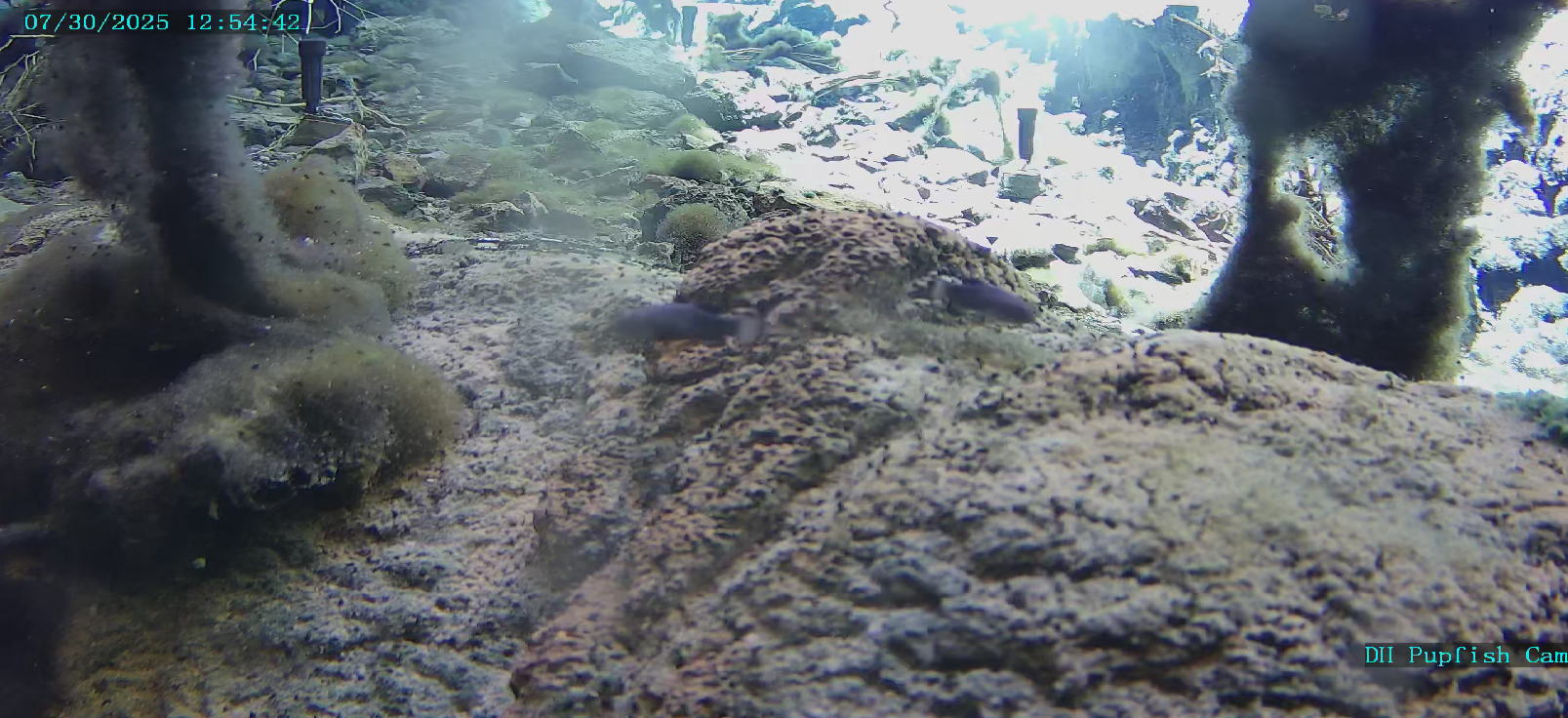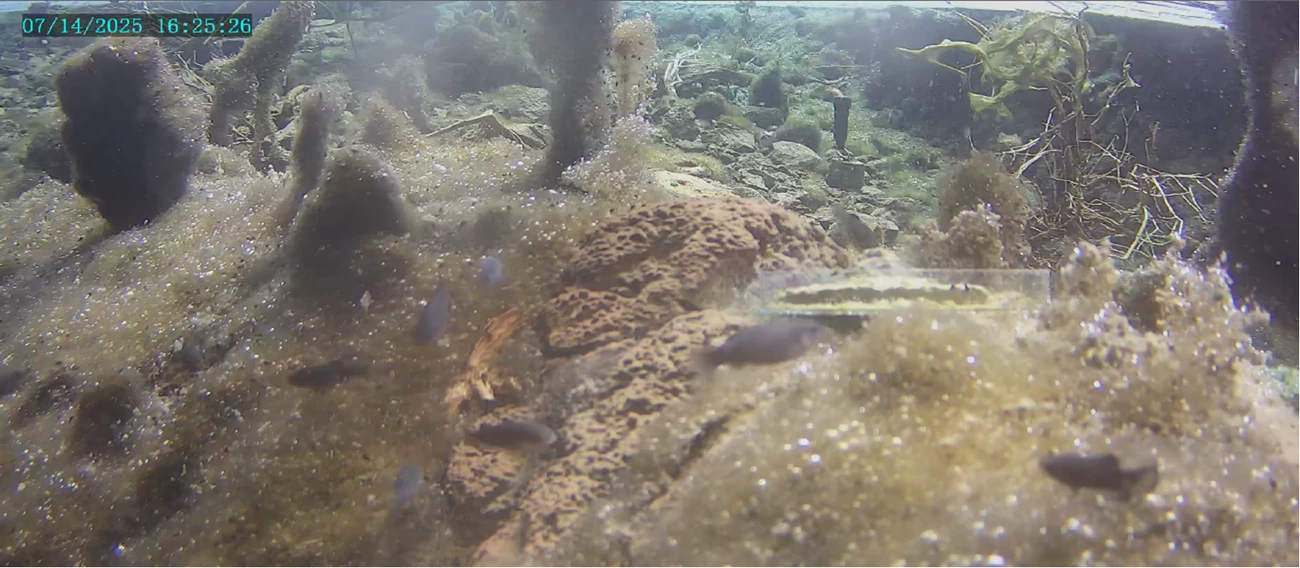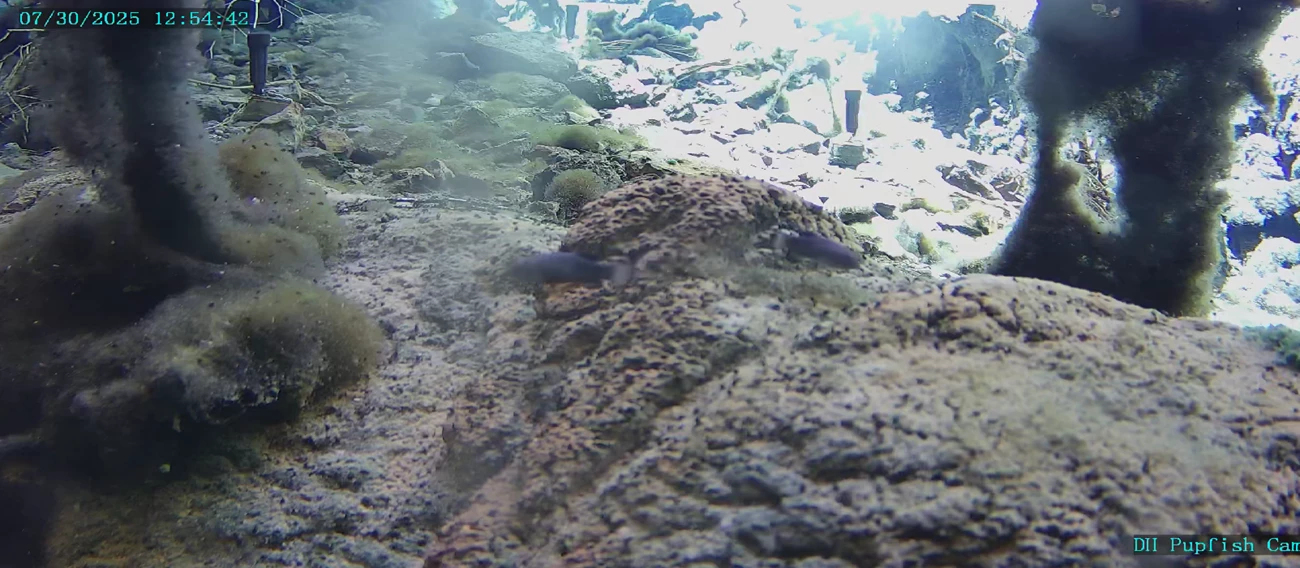News Release

NPS
|
Subscribe
|
Contact: DEVA News
Contact: Abby Wines, 760-786-3221
AMARGOSA VALLEY, Nev. – On July 29, just 21 minutes after a magnitude 8.8 earthquake struck Russia’s Kamchatka Peninsula, waves were triggered nearly 4,000 miles away in Death Valley National Park. Earthquakes can generate waves in enclosed bodies of water, even over surprising distances.Devils Hole is a water-filled cave approximately 12 feet wide and over 500 feet deep, with a water surface that is typically sheltered from wind and remains extremely calm. The endangered Devils Hole Pupfish depend on a shallow shelf at the cave’s mouth for most of their food and spawning.
The pupfish's habitat was previously affected by earthquake waves in December and February, which removed most of algae and invertebrates that pupfish rely on for food. During the official survey in March, only 38 fish were counted.
Fortunately, biologists are less concerned about the impacts of the July 29 quake on the pupfish. The waves generated by this earthquake were smaller than those from the previous quakes, as the epicenter was farther away. The 10-inch waves from the Kamchatka quake only removed some materials from the shallow shelf.
Additionally, the timing of this quake is less concerning for the pupfish. With the sun at a high angle in summer, conditions are favorable for algae regrowth. Pupfish typically increase their spawning rates after disturbances, offering hope for a rebound of the Devils Hole Pupfish population.
Devils Hole before and after the July 29, 2025 earthquake


Left image
Image before the July 29 earthquake, showing the algae mat.
Credit: NPS
Right image
Screenshot from a monitoring video camera in Devils Hole, taken the day after the earthquake caused waves that removed some algae and invertebrates.
Credit: NPS
Last updated: September 8, 2025
